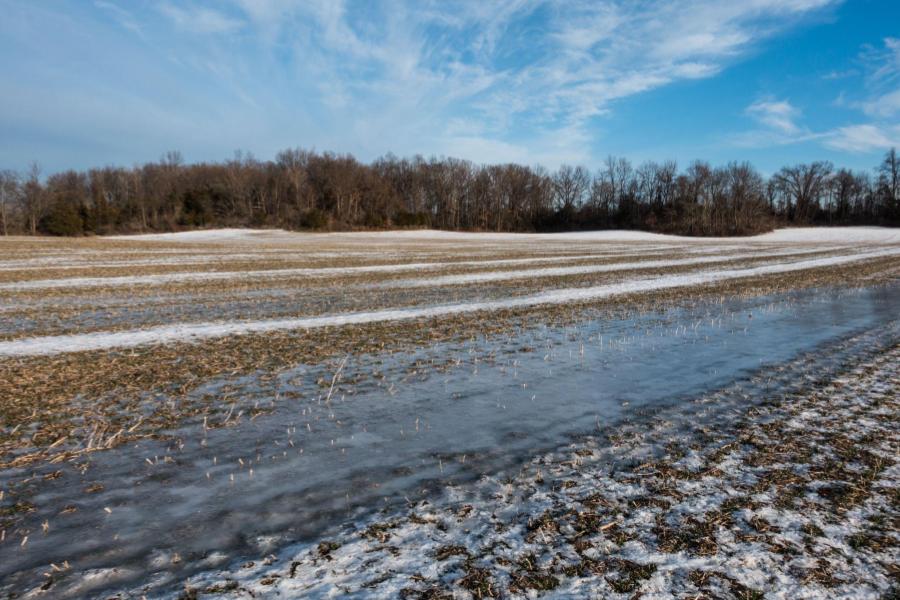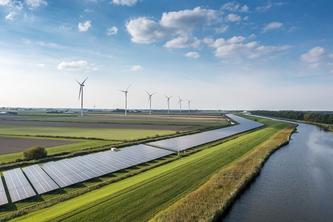
MINNEAPOLIS/ST. PAUL (09/27/2022) — Nitrous oxide is a greenhouse gas, like carbon dioxide or methane. Often overlooked in climate change discussions because it’s less abundant in the atmosphere, its potency is about 300 times greater than carbon dioxide and researchers say its warming potential, especially via agriculture, demands attention.
Researchers from the University of Minnesota and the University of Illinois are investigating the drivers of agricultural nitrous oxide emissions from the U.S. Midwest in an effort to help stakeholders develop specific mitigation strategies to reduce nitrous oxide emissions.
In a study recently published in Agricultural and Forest Meteorology, the researchers used an advanced process-based model to investigate the magnitude and drivers of nitrous oxide emissions during the non-growing season in the Midwest.
“Nitrous oxide emissions from agricultural soils have mostly been studied during the growing season. Previous research shows non-growing season nitrous oxide emissions can contribute up to 70-90% of annual emissions in some years, but it's not clear how accurate that range is for the Midwest or what processes and management practices contribute to those emissions in the fall and winter," says Yufeng Yang, the study's lead author and a graduate student at the University of Minnesota.
Using their model, the researchers found that soil freezing and thawing contributed to spikes in emissions during the non-growing season. Soil freezing promoted nitrous oxide production by blocking oxygen transfer and soil thawing promoted production by increasing soil water content.
The researchers found:
- Intensive freezing caused by decreased air temperature was the dominant driver leading to increased non-growing season nitrous oxide emissions in the southeastern Midwest.
- In the northwest, increased precipitation and increased air temperature during thawing cycles were the key drivers enhancing non-growing season nitrous oxide production.
"The bottom line is we now have a highly accurate method for estimating nitrous oxide emissions at the county scale in the Corn Belt. We have underestimated the non-growing-season, but it turns out to be a pretty significant portion of annual nitrous oxide emissions," said Zhenong Jin, an assistant professor in the Department of Bioproducts and Biosystems Engineering at the U of M.
The researchers say this model could be used to evaluate the effects of additional management strategies, such as cover cropping and no-till, on nitrous oxide emissions.
“This validation study demonstrates that our model can realistically simulate nitrous oxide emissions from agricultural soils in the non-growing season. It means we now have a robust way to quantify the contributions of environmental variables and nitrogen application timing to this important greenhouse gas,” said study co-author Kaiyu Guan, associate professor in the Department of Natural Resources and Environmental Sciences and founding director of the Agroecosystem Sustainability Center at the University of Illinois.
This research was supported by the a Department of Bioproducts and Biosystems Engineering, University of Minnesota-Twin Cities; Department of Natural Resources and Environmental Sciences, University of Illinois at Urbana Champaign; Agroecosystem Sustainability Center, Institute for Sustainability, Energy, and Environment, University of Illinois at Urbana Champaign; Department of Smart Farm, Jeonbuk National University; Climate Sciences Department, Climate and Ecosystem Sciences Division, Lawrence Berkeley National Laboratory; Laboratoire des Sciences du Climat et de l'Environnement, CEA-CNRS-UVSQ, UMR 8212; Department of Renewable Resources, University of Alberta; and the Department of Soil, Water, and Climate, University of Minnesota-Twin Cities.
-30-
About the College of Food, Agricultural and Natural Resource Sciences
The University of Minnesota’s College of Food, Agricultural and Natural Resource Sciences (CFANS) strives to inspire minds, nourish people, and sustainably enhance the natural environment. CFANS has a legacy of innovation, bringing discoveries to life through science and educating the next generation of leaders. Every day, students, faculty, and researchers use science to address the grand challenges of the world today and in the future. CFANS offers an unparalleled expanse of experiential learning opportunities for students and the community, with 12 academic departments, 10 research and outreach centers across the state, the Minnesota Landscape Arboretum, the Bell Museum of Natural History, and dozens of interdisciplinary centers.
- Categories:
- Agriculture and Environment
- Climate Change





